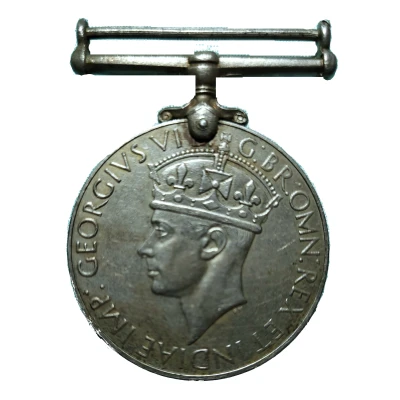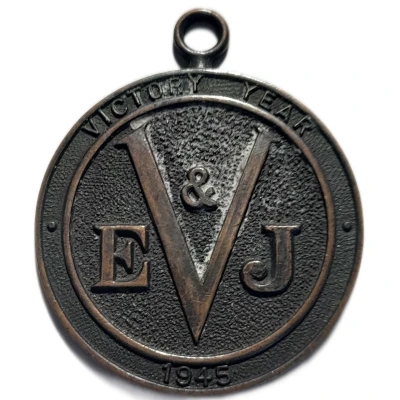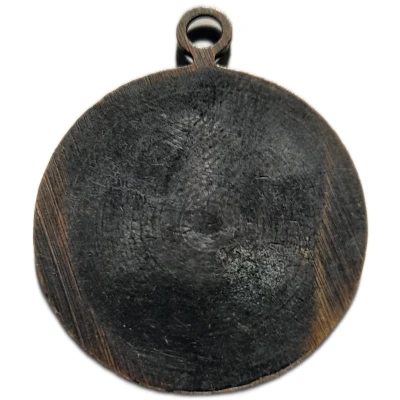


© Maneeshks (CC BY-NC)
Medal - George VI War Medal ND
1945 year| Copper-nickel | 32.3 g | 36 mm |
| Location | United Kingdom (United Kingdom, British Overseas Territories and Crown Dependencies) |
|---|---|
| King | George VI (1936-1952) |
| Type | Award medals › Military awards |
| Year | 1945 |
| Composition | Copper-nickel |
| Weight | 32.3 g |
| Diameter | 36 mm |
| Thickness | 3 mm |
| Shape | Round (The non-swivelling straight bar suspender is attached to the medal with a single-toe claw mount) |
| Orientation | Medal alignment ↑↑ |
| Updated | 2024-11-14 |
| Numista | N#298710 |
|---|---|
| Rarity index | 58% |
Reverse
A lion standing on the body of a double-headed dragon. The dragon's heads are those of an eagle and a dragon to signify the principal occidental and oriental enemies. At the top, just right of centre are the dates 1939/1945 in two lines.
Script: Latin
Lettering:
1939
1945
Translation: The years 1939 and 1945 represent the start and end of the Second World War.
Designer: Edward Carter Preston
Comment
The War Medal 1939–1945 is a campaign medal awarded to citizens of the British Commonwealth who served full-time in the Armed Forces or the Merchant Navy for a minimum of 28 days between 3 September 1939 and 2 September 1945.The medal is sometimes incorrectly referred to as the "Victory Medal" for the Second World War.
It was decided that Second World War campaign medals awarded to British forces would be issued unnamed, a practice followed by all but three British Commonwealth countries. The recipient's name was impressed on the rim of the medal awarded to Indians, South Africans and, after a campaign led by veteran organisations, by Australia. In addition, those awarded to personnel of the Royal Canadian Mounted Police who served only on the RCMPV St. Roch and of the Canadian Merchant Marine were named. In the case of Indians, the recipient's force number, rank, initials, surname and service arm or corps, and in the case of South Africans and Australians, the force number, initials and surname, were impressed on the rim in block capitals.
The British issue medals were struck in cupro-nickel, while those awarded in Canada (about 700,000) were struck in silver.
Price
| Date | Mintage | VG | F | VF | XF | AU | UNC |
|---|---|---|---|---|---|---|---|
| ND (1945) | - | - | - | - | - | - |
Values in the table are based on evaluations by sales realized on Internet platforms. They serve as an indication only for Medal - George VI (War Medal) ND (1945) item.



